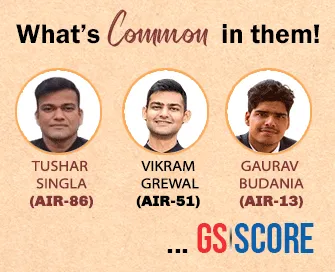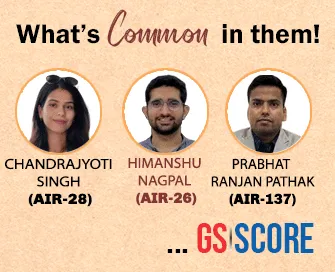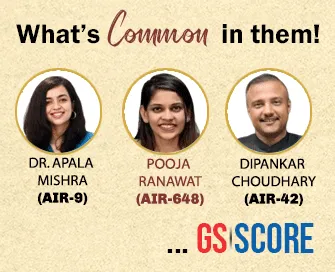

11th July 2025 (15 Topics)
Mains Issues
Context:
On July 10, the Supreme Court directed the Election Commission to include Aadhaar, EPIC, and ration card for Bihar’s Special Intensive Revision of electoral rolls, underscoring that the right to vote is fundamental to the republic.
Universal Adult Suffrage and Identity Verification in India
- Historical Context of Universal Adult Suffrage (UAS)
- Global Comparison: Many democracies adopted UAS gradually—Britain (males 1918, females 1928), U.S. via 15th/19th Amendments—but India enshrined UAS in Article 326 from the Constitution’s inception.
- Democratic Ideology: From the start, Indian electoral law rejected the J.S. Mill–style elitist view, guaranteeing inclusion regardless of gender, caste, education, or wealth.
- Legal Foundations of Electoral Rolls
- Constitutional & Statutory Framework:
- UAS embedded via Article 326, and operationalised through Representation of the People Acts (RPA) 1950 and 1951.
- The EC (under Article 324) holds administrative autonomy to prepare and revise electoral rolls.
- Section 21, RPA 1950, empowers the EC to correct inaccuracies, ensuring electoral integrity.
- Symbol Innovation: ECI overcame literacy barriers by introducing election symbols, enabling nearly 173 million early voters to participate.
- Electoral Rights: Fundamental or Statutory?
- Supreme Court Rulings:
- KuldipNayar v. Union of India (2006): ‘Right to vote’ is statutory, not fundamental.
- Rajbala (2016): Minority bench called it constitutional, but KuldipNayar remains binding.
- AnoopBaranwal (2023): Reaffirmed KuldipNayar, though dissents sighted it in Articles 19(1)(a) and 21.
- Democratic Imperative: Courts however emphasise that even statutory, voting remains central to democracy’s sustenance.
- Key Issues in Bihar’s SIR Exercise
- EC’s Document List: Only 11 identity proofs were initially accepted for SIR—excluding widely held documents like Aadhaar—leading to disenfranchisement risk.
- SC's Directive: Inclusion of AADHAAR, EPIC, ration card – “identity matters, not citizenship”; these are used to obtain other proofs like caste certificates.
- Over/Inclusion Concerns: Removing or failing to add eligible voters undermines “one person, one vote”; similarly, allowing ineligible entries distorts representation.
- Notions of Residency and Citizenship in Voter Rolls
- Ordinary Resident Test (Section 19, RPA) – genuine, continuous presence in a constituency; case-law like Manmohan Singh (1991) sets the precedent.
- Overseas & Service Voters: Eligible under Section 20A and Rule 18, though without proxy or postal voting.
- Citizenship Verification: Lal Babu Hussein v. ERO (1995) invalidated EC-neutral deletion mandates; stressed past rolls and due process for anyone’s removal.
Way Forward
- Ensure Inclusive Identity Verification: The Court’s move to include Aadhaar and ration card removes artificial entry barriers, aligning SIR with constitutional equality and universal suffrage.
- Maintain Electoral Roll Accuracy & Accessibility: The EC should mobilize field-level outreach and public awareness, enabling citizens to verify and update their entries proactively.
- Balance Vigilance with Rights Protection: Address ineligible inclusions efficiently without disenfranchising legitimate voters; distinguish between material errors and minor anomalies, as per Section 21 RPA.
- Boost Transparency & Judicial Oversight: SC’s scrutiny of the SIR’s timing and conduct must continue to ensure that electoral reforms strengthen democracy, not limit participation.
- Legal Reform Considerations: To resolve statutory–constitutional ambiguity, Parliament could clarify the legal status of the right to vote and codify acceptable identity documents in alignment with evolving needs.


Mains Issues
Context:
FATF's latest report exposes how Pakistan-based terror groups like JeM and LeT use sham NPOs and digital platforms for terror financing, marking the first international acknowledgment of state-sponsored terrorism.
Trends and Challenges in Terrorist Financing (TF)
- Persistent Vulnerabilities in the Financial Ecosystem
- Terrorist organizations continue to exploit both formal and informal financial systems, adapting swiftly to regulatory crackdowns.
- Porous borders, especially in regions like Africa and South Asia, facilitate cross-border cash smuggling and informal fund transfers.
- State sponsorship of terrorism, though diplomatically denied, continues to pose serious risks to global peace and counter-terrorism efforts.
- Conventional Methods of TF
- Cash-based transactions remain prevalent, especially in conflict-prone zones with weak banking infrastructure.
- Hawala and informal value transfer systems are exploited due to minimal documentation, as used by groups like Al-Shabaab and Hamas.
- Emerging Methods of Terrorist Financing
- Digital Platforms:
- Terrorist entities increasingly use social media, crowdfunding sites, and online marketplaces for fundraising.
- Cryptocurrencies (e.g., Bitcoin) are favored for their pseudonymous nature and cross-border transferability.
- Even online gaming platforms are now used for fund transfers by masking financial flows as in-game transactions.
- Criminal Activities:
- Terrorist groups finance operations through drug trafficking, kidnapping for ransom (KFR), extortion, and illicit trade in natural resources like gold, timber, and wildlife.
- Example: Boko Haram is known to rely on such illicit sources of income.
- Use of Legal Entities:
- Exploitation of non-profit organizations (NPOs) and shell companies for fund diversion is a recurring tactic.
- Regulatory gaps in Free Trade Zones (FTZs) make it easier to conceal financial trails.
- Key Recommendations for CTF (Counter-Terrorism Financing)
- Risk Indicators:
- Authorities must flag activities like frequent small transfers, use of anonymity-enhancing technologies (e.g., prepaid cards, privacy coins), and links to high-risk jurisdictions.
- Global Multilateral Frameworks:
- A coordinated international response is necessary, particularly through UN Security Council (UNSC) Resolutions and sanctions.
- The Financial Action Task Force (FATF) plays a central role by setting global CTF standards.
- Inclusive Public-Private Partnerships (PPPs):
- Extend outreach beyond traditional financial institutions to include social media firms, digital platforms, and messaging app providers.
- Develop real-time intelligence-sharing frameworks to detect and prevent online fundraising and recruitment.
- Strategic Significance for India and Global Community
- For India, combating TF is essential due to continued threats from cross-border terrorism, especially in Jammu & Kashmir and North-East regions.
- Strengthening domestic mechanisms like the Unlawful Activities (Prevention) Act (UAPA) and ensuring FATF compliance is key.
- Globally, the challenge lies in striking a balance between financial innovation and regulatory oversight to curb terror financing.
|
Financial Action Task Force (FATF)
Background & Establishment
Mandate Evolution
Key Functions
Members
India and FATF
Observers
|


Prelims Articles
Context:
Ashadha Purnima was commemorated at Sarnath by the International Buddhist Confederation to mark DhammachakraPravartana Divas, celebrating Lord Buddha’s first sermon, reaffirming India’s central role in global Buddhist heritage.
Significance of Ashadha Purnima &DhammachakraPravartana Divas:
- Ashadha Purnima marks Lord Buddha’s first sermon at Sarnath in Deer Park (Rishipattana) to the PanchavargiyaBhikshus (five ascetics), initiating the Wheel of Dharma (DhammachakraPravartana).
- It also marks the foundation of the Buddhist Sangha, making it a vital event in Buddhist history.
Role of International Buddhist Confederation (IBC):
- IBC is a body under the Ministry of Culture, Government of India, established to promote Buddhist heritage and global Buddhist unity.
- It organizes events like Global Buddhist Summit and commemorates key Buddhist festivals such as Vesak and Ashadha Purnima.
Cultural and Diplomatic Importance of Sarnath:
- Sarnath is one of the four major Buddhist pilgrimage sites (others being Lumbini, Bodh Gaya, and Kushinagar).
- The event also reflects India’s soft power diplomacy, especially in strengthening ties with Buddhist-majority countries like Sri Lanka, Vietnam, Thailand, and Myanmar.
VarshaVassa (Monastic Retreat):
- Begins on Ashadha Purnima; monks stay in one location for three months of the monsoon, engaging in intensive spiritual practices, a tradition dating back to Buddha’s time.
Use of Ashadha Purnima by Government for Cultural Integration:
- Celebrations reflect India’s civilizational continuity, cultural diplomacy, and promotion of interfaith harmony through Buddhism.
|
Ashadha Purnima (DhammachakraPravartana Divas):
|


Prelims Articles
Context:
The Ministry of Culture will host the first-ever International Conference on India’s Manuscript Heritage from 11–13 September 2025 in New Delhi, aiming to revive BharatiyaJnanaParampara and mark Swami Vivekananda’s historic 1893 Chicago address.
Bridging Civilisational Heritage with Contemporary Knowledge Systems:
- Unparalleled Manuscript Wealth: India holds over 10 million manuscripts, covering disciplines like philosophy, science, medicine, mathematics, arts, and rituals. These manuscripts represent the living tradition of Indian Knowledge Systems (IKS), not just historical records.
- Themes and Activities of the Conference: Key thematic sessions include palaeography, AI-integrated digitisation, metadata standards, ethical custodianship, curricular integration, and conservation methods. Live workshops, exhibitions, and cultural performances will supplement the academic programme.
- Key Institutional and Structural Outcomes:
- New Delhi Declaration onManuscript Heritage
- Formation of expert working groups on decipherment, conservation, digitisation, and translation
- Launch of the Manuscript Research Partner (MRP) programme to engage youth and scholars
- Creation of long-term international collaborations and institutional linkages


Prelims Articles
Context:
The Ministry of Women and Child Development is convening a Zonal Meeting on 12th July 2025 in Kevadia, Gujarat, to enhance Centre-State collaboration and review key schemes like Mission Shakti, Mission Vatsalya, and SakshamAnganwadi&Poshan 2.0.
Purpose and Participants:
- The Zonal Meeting is intended to enhance Centre-State coordination for effective implementation of Women and Child Development (WCD) schemes.
- Participating states: Gujarat, Maharashtra, Madhya Pradesh, Rajasthan, Goa, and Dadra & Nagar Haveli and Daman & Diu.
Key Schemes in Focus:
- Mission Shakti: Focuses on safety, security, and empowerment of women (includes Sambal and Samarthya sub-schemes).
- Mission Vatsalya: For child protection services including institutional/non-institutional care, adoption, and child helpline.
- SakshamAnganwadi and Poshan 2.0: Strengthens nutrition services and infrastructure; promotes digital tools like the Poshan Tracker.
Technological and Governance Innovations:
- Discussions include use of Face Recognition Systems (FRS) for authentication in service delivery.
- Promotes technology-enabled grassroots integration and cross-learning from best practices presented by various states.
- Initiative like “EkPedMaaKeNaam” shows convergence of environmental sustainability with social development efforts.
|
Zonal Councils
Types of Zonal Councils and Member States
Composition of Zonal Councils
Functions of Zonal Councils
|


Prelims Articles
Context:
The Telangana Cabinet has approved 42% reservation for Backward Classes (BCs) in local body elections, based on its caste survey findings, fulfilling a key electoral promise while navigating constitutional and legal constraints on reservation limits.
Reservation in Local Bodies – Constitutional and Legal Framework:
- Article 243D and Article 243T of the Constitution provide for reservation in Panchayats and Municipalities respectively for SCs, STs, and women.
- Reservation for Other Backward Classes (OBCs) is not mandatory under the Constitution but can be provided based on empirical data, as per the Supreme Court judgment in Krishna Murthy v. Union of India (2010).
- The Telangana government has cited a caste survey and legal advice to justify the enhancement to 42% BC quota.
Judicial Scrutiny and Reservation Ceiling:
- The IndraSawhney case (1992) capped reservations at 50%, though exceptions can be made if backed by quantifiable data.


Prelims Articles
Context:
The Ministry of Mines has issued guidelines for the Aspirational DMF Programme to align DMF funds with NITI Aayog's ADP and ABP, under PMKKKY, for integrated development of mining-affected areas.
Aspirational DMF Programme:
- Launched under the Ministry of Mines in 2024–25 to integrate DMF activities with Aspirational Districts and Blocks frameworks.
- Objective:Alignment of DMF-funded activities with key sectors and performance indicators under ADP and ABP to generate multiplier impact in mining-affected regions.
Key Priority Sectors for Convergence:
- Agriculture & Water Resources
- Health and Nutrition
- Education
- Basic Infrastructure
- Social & Financial Development
- Skill Development and Livelihood Enhancement
Identification and Scale:
- 106 Aspirational Districts and 473 Aspirational Blocks currently aligned with DMF programmes.
- Coverage is likely to expand based on state-level integration and feedback mechanisms.
|
About District Mineral Foundation (DMF):
Aspirational Districts & Blocks Programme (ADP/ABP):
|
|
PYQ: Q. With reference to the management of minor minerals in India, consider the following statements:(2019) 1. Sand is a 'minor mineral' according to the prevailing law in the country. 2. State Governments have the power to grant mining leases of minor minerals, but the powers regarding the formation of rules related to the grant of minor minerals lie with the Central Government. Which of the statements given above is/are correct? (a) 1 only (b) 2 only (c) Both 1 and 2 (d) Neither 1 nor 2 |


Prelims Articles
Context:
The SC-NBWL has approved Rajasthan’s proposal to redraw Sariska Tiger Reserve’s Critical Tiger Habitat and buffer zones, aiming to resolve ecological and administrative issues as per CEC recommendations, pending Supreme Court review.
Sariska Tiger Reserve – Ecological Significance
- Location:Alwar district, Rajasthan
- Status: Declared a Tiger Reserve in 1978 under Project Tiger
- Flora and Fauna: Dry deciduous forests, Bengal tigers, leopards, striped hyenas, sambhars, nilgai
- Unique Issue: Entire tiger population had become extinct by 2005; tigers were later reintroduced (first successful tiger relocation effort globally).
Critical Tiger Habitat (CTH) & Buffer Zones – Definitions
- Critical Tiger Habitat (CTH) (Core area):
- Notified under Section 38V of the Wildlife (Protection) Act, 1972
- Areas within Tiger Reserves identified for inviolate protection of tigers
- Requires mandatory informed consent from affected tribal communities prior to relocation (per Forest Rights Act, 2006)
- Buffer Zone:
- Peripheral areas of Tiger Reserves meant for coexistence of conservation and livelihood, lesser restrictions than core areas.
Proposed Rationalisation in Sariska:
- CTH to increase: From 11 sq. km to 924.49 sq. km
- Buffer area to reduce: From 72 sq. km to 203.2 sq. km
- Rationale:
- Address fragmentation
- Clarify forest boundaries
- Support tiger breeding areas
- Manage legal/administrative challenges, particularly around mining
Mining and Environmental Concerns
- Issue: Supreme Court had closed over 50 mines in 2023–24 due to their proximity to CTH.
- CEC Observations:
- Mining leases had been granted due to unclear forest boundaries
- Rationalisation should avoid any net loss in CTH area
- Maintain ecological connectivity even in low tiger-density zones
- NBWL Condition:
- Prevent developmental activities harmful to wildlife
- Strengthen habitat monitoring, community engagement, and patrolling


Prelims Articles
Context:
After a 30-year disappearance due to a devastating 1992 flood, lotus flowers have reappeared in Wular Lake, Kashmir, following extensive desilting and restoration efforts by the Wular Conservation and Management Authority (WUCMA).
Wular Lake:
- Located in Bandipora district of Jammu & Kashmir, it is one of the largest freshwater lakes in Asia.
- It is a Ramsar site and plays a vital role in the hydrology of the Jhelum River basin.
- The lake serves important ecological functions, including flood control, groundwater recharge, and habitat provision for biodiversity.
1992 Flood Impact:
- A severe flood in 1992 led to the deposition of large silt quantities, burying lotus seeds and hampering water flow.
- This caused the disappearance of lotus plants, traditionally harvested for food and income.
WUCMA’s Restoration Efforts:
- The Wular Conservation and Management Authority (WUCMA) undertook desilting and dredging operations beginning in 2020.
- Around 79 lakh cubic metres of silt have been removed so far.
- Lotus seed dispersal and natural regrowth have been facilitated, reviving the aquatic plant population.
Ecological and Economic Significance:
- The lotus stem (Nadru) is a culinary delicacy in Kashmir and supports local livelihoods.
- The revival enhances biodiversity, water quality, and provides seasonal employment from September to March.
- Additional initiatives include retention basin construction on tributaries to prevent further siltation.
Conservation Importance:
- The event underlines the role of wetlands in climate resilience and biodiversity conservation.
- It demonstrates positive ecological outcomes from wetland restoration projects, making it significant for both environment and economy.


Prelims Articles
Context:
NITI Aayog has recommended that the Department of Science and Technology (DST) replace core grant support with project-based funding for State Science & Technology Councils, citing limited state-level R&D output and growing dependence on Central institutions.
Background on State S&T Councils:
- Established since the 1970s, these Councils were created to decentralise science governance and align R&D with region-specific socio-economic needs.
- They support research projects, science outreach, patent filings, and S&T policy implementation at the state level.
Key Findings of the NITI Aayog Report:
- Recommends replacing core grants with project-based funding from DST.
- Notes disproportionate contribution to national R&D by Central institutions versus State institutions.
- Reveals that central funding forms a minuscule share of State Councils’ budgets: e.g., Gujarat (?1.07 crore of ?300 crore), Kerala (zero central contribution).
Budget Insights:
- Despite the structural issues, the Councils saw a 17.65% increase in their budgets between FY 2023–24 and 2024–25.
- The report raises concerns over regional disparities in S&T development across states.
Policy Shift Implication:
- Transitioning to project-based support may enhance accountability, output-driven funding, and alignment with national priorities.
- However, it may weaken the financial autonomy of weaker States and widen the existing regional R&D imbalance unless carefully structured.
Related Institutional Frameworks:
- DST operates under the Ministry of Science and Technology and is responsible for coordinating science funding and policy at both national and sub-national levels.
- NITI Aayog, as the apex public policy think tank, periodically evaluates the effectiveness of intergovernmental funding structures.


Prelims Articles
Context:
Dr.SoumyaSwaminathan, Principal Advisor to the National TB Elimination Programme (NTEP), has proposed adopting district-level TB death audits—similar to maternal death reviews—to reduce TB mortality and achieve India’s TB elimination goals.
India’s TB Burden and Elimination Targets
- India accounts for the world’s highest number of TB cases.
- As per the India TB Report 2024, TB mortality has declined from 35 per 1,00,000 in 2015 to 22 per 1,00,000 currently.
- India aims to eliminate TB by 2025, five years ahead of the UN SDG Target (2030).
TB Death Audit Proposal
- Modelled on maternal death audits.
- Proposed to be led by District Collectors with participation from public health departments or medical colleges.
- Objective: Identify systemic gaps in service delivery and socioeconomic causes behind TB mortality.
Key Programmes and Interventions
- National TB Elimination Programme (NTEP) under the Ministry of Health.
- NikshayMitraYojana: Aims to provide nutritional and financial support to TB patients.
- Direct Benefit Transfer (DBT): Amount increased from ?500 to ?1,000/month to improve nutrition and treatment adherence.
- KasanoiErappilaThittam (TN-KET): Tamil Nadu’s ‘TB Death-Free Project’ successfully triaged patients and improved inpatient care.
- 100-day TB Elimination Campaign: Focuses on expanding upfront molecular diagnostics and handheld X-ray screening with AI algorithms.
Emerging Best Practices
- Portable Handheld X-rays with AI Integration: Boosted case notification by 10–12% in Mumbai.
- Upfront Molecular Testing: Enhanced early detection and drug-resistance profiling.
- Nutrition-based Protection (RATIONS Trial): Demonstrated ~50% reduction in secondary TB infections through nutritional support.
Challenges in TB Control
- High TB fatality rates in the 25–55 age group.
- Social determinants: malnutrition, diabetes, alcoholism, and delayed care-seeking.
- Subclinical TB constitutes nearly 40–50% of cases, which symptom-based screening fails to detect.


Prelims Articles
Context:
The UNFPA Global State of World Population Report (2024) has emphasized that the global fertility crisis is rooted not in the number of births, but in the denial of reproductive agency and rights, especially among women. It advocates for a rights-based and lifecycle approach to reproductive health policy.
Understanding UNFPA’s Global Population Perspective
- United Nations Population Fund (UNFPA) is the UN's sexual and reproductive health agency operating in over 150 countries.
- The 2024 Global Report moves beyond fertility statistics to emphasize reproductive agency, women’s autonomy, and lifecourse investments.
Key Concept: The Real Fertility Crisis
- The crisis lies not in high or low birth rates, but in women’s inability to exercise informed reproductive choices.
- One in four women globally lack the autonomy to say no to sex or decide when and with whom to have children.
UNFPA’s Rights-Based Approach
- Rejects coercive pronatalist policies (e.g., baby bonuses, fertility mandates).
- Focuses on:
- Affordable housing and childcare
- Decent work and parental leave
- Access to fertility and reproductive health services
- Gender-equitable social policies
- Legal and social recognition of all family types, including LGBTQIA+
Structural Determinants of Fertility Decline
- Gender norms, income insecurity, conflict, and pandemic-induced uncertainty are major non-biological factors impacting fertility decisions.
- UNFPA urges governments to invest in “demographic resilience” by adapting policies to societal needs rather than manipulating fertility targets.
Implications for India
- India, with a Total Fertility Rate (TFR) already below replacement in many states, must avoid coercive pronatalism.
- Instead, it should focus on:
- Strengthening adolescent reproductive health
- Enhancing women's employment and education
- Upholding reproductive rights through legal safeguards


Editorials
Context:
The Supreme Court has directed the Election Commission to consider Aadhaar, EPIC, and ration card for identity verification in Bihar’s Special Intensive Revision (SIR), highlighting concerns over exclusionary practices and reaffirming the ECI’s duty to uphold inclusive democratic participation.
Constitutional Concerns & Identity Verification
- Mandate under Article 324: The Court emphasized that the ECI, under Article 324 of the Constitution, must enable participation in the democratic process and cannot erect procedural barriers that disenfranchise citizens.
- Nature of Verification: The Court noted that the SIR is meant to establish identity, not citizenship, and that all 11 currently listed documents serve only to verify identity—not citizenship—rendering the exclusion of Aadhaar illogical.
- Inconsistency in Document Policy: The Court questioned why Aadhaar, used as a foundational document for obtaining others (like caste certificates), is excluded, whereas those derivative documents are accepted, exposing a policy inconsistency.
Practical Realities and Risk of Disenfranchisement
- Demographic Challenges in Bihar:While 87% of Bihar’s population has Aadhaar, only 45-50% are matriculates and less than 2% have passports, making the current document list inaccessible for a majority.
- Disproportionate Burden on Voters:The SIR seems to reverse constitutional jurisprudence by treating all voters as potential non-citizens unless they prove otherwise, contrary to earlier Supreme Court rulings that rejected shifting the onus of proving citizenship onto registered voters.
- Marginalisation Risk:The current approach risks large-scale disenfranchisement, particularly among marginalised and less-educated populations, undermining the very principle of universal suffrage.
Judicial Oversight and Institutional Accountability
- Lack of Institutional Clarity: Conflicting interpretations between the Chief Electoral Officer in Bihar and the Chief Election Commissioner on document leniency led to confusion, weakening field-level implementation.
- Scope of Judicial Review: The Court has kept the matter under scrutiny and scheduled a further hearing, stressing that timing, method, and purpose of SIR will undergo judicial review to ensure democratic integrity.
- Path to Inclusivity: The Supreme Court’s suggestion to expand the list of identity documents gives the ECI a chance to correct its course and ensure the SIR is inclusive and constitutionally compliant.
Practice Question:
- Discuss the constitutional implications of the Election Commission of India’s Special Intensive Revision (SIR) in Bihar in light of recent Supreme Court observations. How can electoral processes be made more inclusive without compromising verification standards?(250 words)


Editorials
Context:
The UN’s 2025 World Population Day theme emphasizes youth empowerment and reproductive rights, urging countries like India—with the world’s largest youth population—to invest in rights-based, multi-sectoral strategies to realize its demographic dividend.
Youth, Reproductive Autonomy & Demographic Dividend
- Demographic Window of Opportunity: India has 371 million youth (15–29 years), as per UNICEF, the largest in the world, offering a demographic dividend potential of $1 trillion in GDP by 2030 (World Bank & NITI Aayog).
- Persisting Challenges in Reproductive Autonomy:NFHS-5 (2019–21) reveals 23.3% child marriages and 7% teenage pregnancies nationally, with some states reporting twice the national average, indicating deep regional disparities.
- Unmet Reproductive Goals: The UNFPA State of World Population Report 2025 shows 36% of Indian adults face unintended pregnancies, while 30% have unmet reproductive goals; 23% face both—signifying limited choice and agency.
Policy Interventions and Programme Impacts
- Udaan Project – Rajasthan (2017–2022): By leveraging government scholarships, awareness, and contraceptive access, 30,000 child marriages and 15,000 teenage pregnancies were prevented, enabling education continuity for adolescent girls.
- Advika Programme – Odisha (2019–2020 onwards): In partnership with UNICEF-UNFPA, the programme declared 11,000 villages child marriage-free and stopped 950 child marriages in 2022, combining adolescent empowerment with state system strengthening.
- Role of Education: UNICEF data indicates that each additional year of secondary education reduces the likelihood of child marriage by 6%, underlining the critical role of formal education in delaying early marriages.
Economic Empowerment and Gender Equity
- Project Manzil – Rajasthan (2019–2025):Using a human-centred design, the project helped 28,000 young women complete skill training, and 16,000 gained employment, many being first-generation skilled workers in their communities.
- Linking Economic Power with Reproductive Agency:Financially empowered women show higher negotiation power in delaying marriage and childbirth, directly enhancing reproductive autonomy and societal participation.
- Comprehensive Approach Needed: The UNFPA calls for multi-sectoral investments—contraception, education, housing, maternal care, and workplace flexibility—to dismantle structural barriers and create enabling environments for youth.
Practice Question:
- "India’s demographic dividend depends not only on population size but also on the empowerment of youth, especially young women." Discuss in light of reproductive autonomy and skill development programmes such as Udaan, Advika, and Manzil.(250 words)


Editorials
Context:
The collapse of a 40-year-old bridge in Vadodara on July 2025, killing 18 people, has spotlighted India's recurring public infrastructure failures, underscoring critical issues of ageing assets, poor maintenance, and lack of transparent audits.
Nature and Pattern of Failures
- Series of Fatal Incidents:Multiple infrastructure failures have occurred across India, including the 2022 Morbi bridge collapse (140 deaths), 2023 Mizoram railway bridge girder failure (26 deaths), and the 2025 Vadodara bridge collapse (18 deaths), highlighting systemic safety lapses.
- Aging Infrastructure Under Stress:Many urban bridges and public facilities, designed decades ago, are now overwhelmed by increasing population pressures and vehicular loads, especially in peri-urban and industrial zones.
- Institutional Gaps in Oversight:Departments responsible for maintenance remain underfunded, understaffed, or complacent, with a lack of public-domain failure analysis reports despite repeated disasters.
Deficiencies in Policy and Monitoring
- Inadequate Public Disclosure:While investigations are often ordered post-incident, the absence of mandatory and timely publication of audit and failure analysis reports has eroded public accountability.
- Limited Audit Scope:Audit responses, when triggered, are usually narrow and restricted to the specific infrastructure type involved, ignoring systemic risks in similar structures.
- Weak Implementation of Existing Frameworks:Despite baseline audit frameworks for municipal bridges, enforcement across states remains inconsistent, with no centralized monitoring or periodic review.
The Way Forward
- Reform Urban Infrastructure Schemes:Schemes like the Urban Infrastructure Development Fund (UIDF) and AMRUT must prioritize maintenance and rehabilitation of ageing infrastructure, especially in cities with over 10 lakh population.
- Mandatory Statutory Probes:Every major infrastructure failure should trigger an investigation by a statutory technical body along with a comprehensive audit of related assets in the region.
- Transparency and Public Engagement:States must institutionalize public disclosure mechanisms for infrastructure audits and investigation reports to enhance civic trust and participatory governance.
Practice Question:
- "India’s urban infrastructure is facing a systemic crisis due to ageing assets and inadequate maintenance mechanisms." Critically examine this statement in light of recent infrastructure failures. Suggest a roadmap for improving the structural resilience of urban public assets.(250 words)




